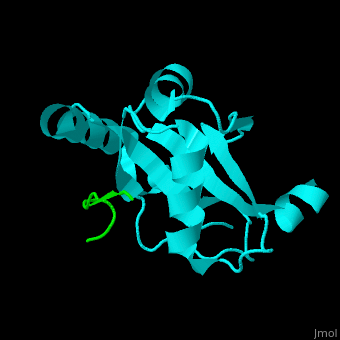Function
Microtubule-associated protein light chain 3 (LC3) is recruited to autophagosomal membranes during autophagy[1]. The human LC3B is cleaved after synthesis to expose a C-terminal glycine which binds via a phospholipid anchor to autophagosomal vesicle membranes during autophagy. Thus detection of LC3 is a reliable method for monitoring autophagy. The microtubule-associated proteins are classified as 2 types. Type 1 includes MAP1 and type 2 includes MAP2, MAP4 and Tau protein.
- MAP1 are classical microtubule-associated proteins which bind along microtubule lattice[2].
- Tau protein is the principal component of the tangles found in Alzheimer's disease. It is hyperphosphorylated on serines and threonines[3].
- Microtubule-associated protein RP/EB family member 1 (MAPRE1) is involved in the regulation of microtubule structure and chromosome stability. It associates with dynactin and the spindle during mitosis[4].
- Microtubule-associated protein RP/EB family member 3 (MAPRE3) localizes to the cytoplasmic microtubule network and binds a homolog of the adenomatous polyposis coli tumor suppressor gene[5].
Disease
Microtubule-associated protein Tau is associated with Alzheimer Disease. Tau forms abnormal aggregates in patients' tissues. Mutations in tau protein are associated with neurodegenerative diseases like frontotemporal dementia[6].
Structural highlights
[7]. Water molecules are shown as red spheres.
3D Structures of microtubule-associated protein
Microtubule-associated protein 3D structures

